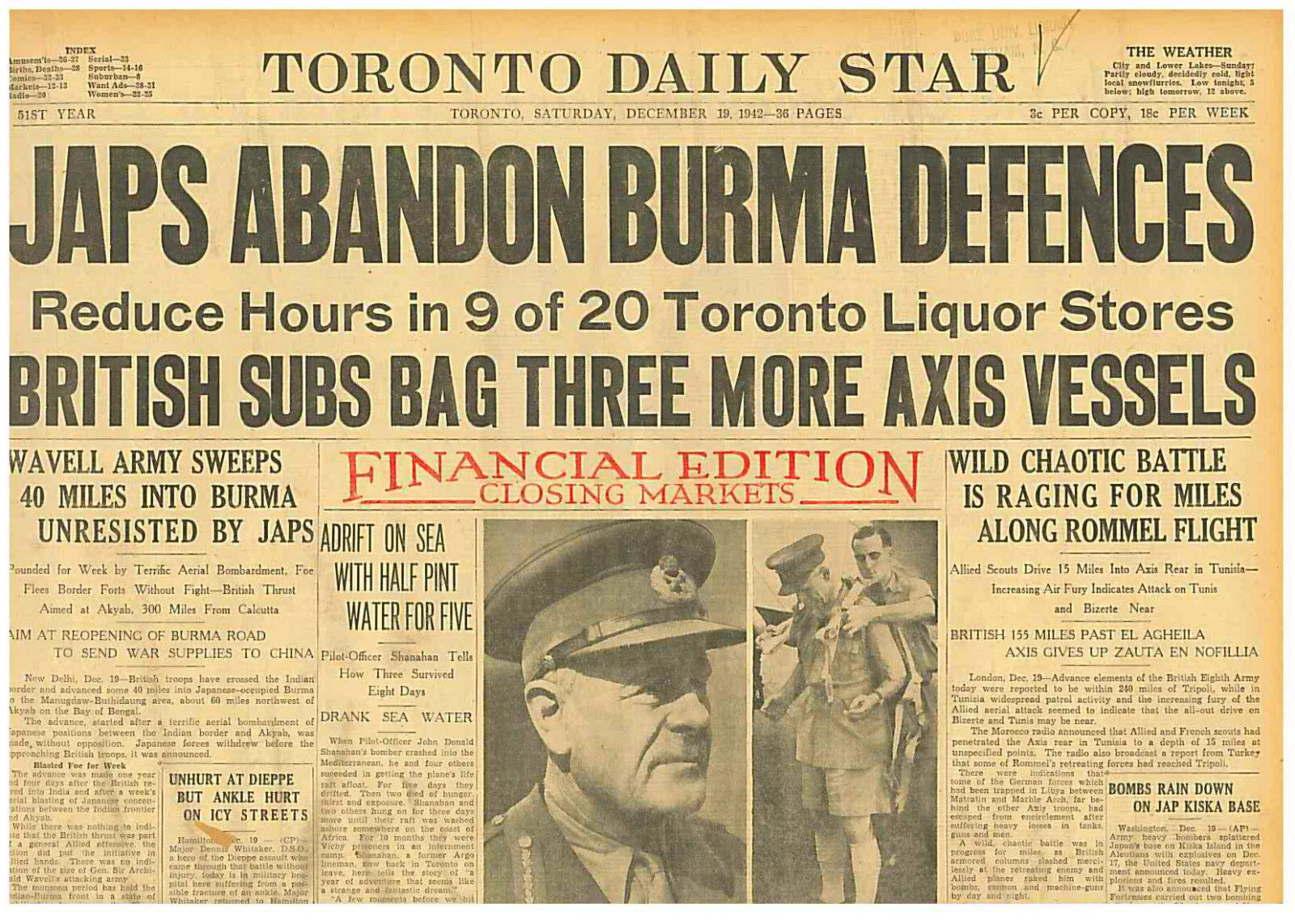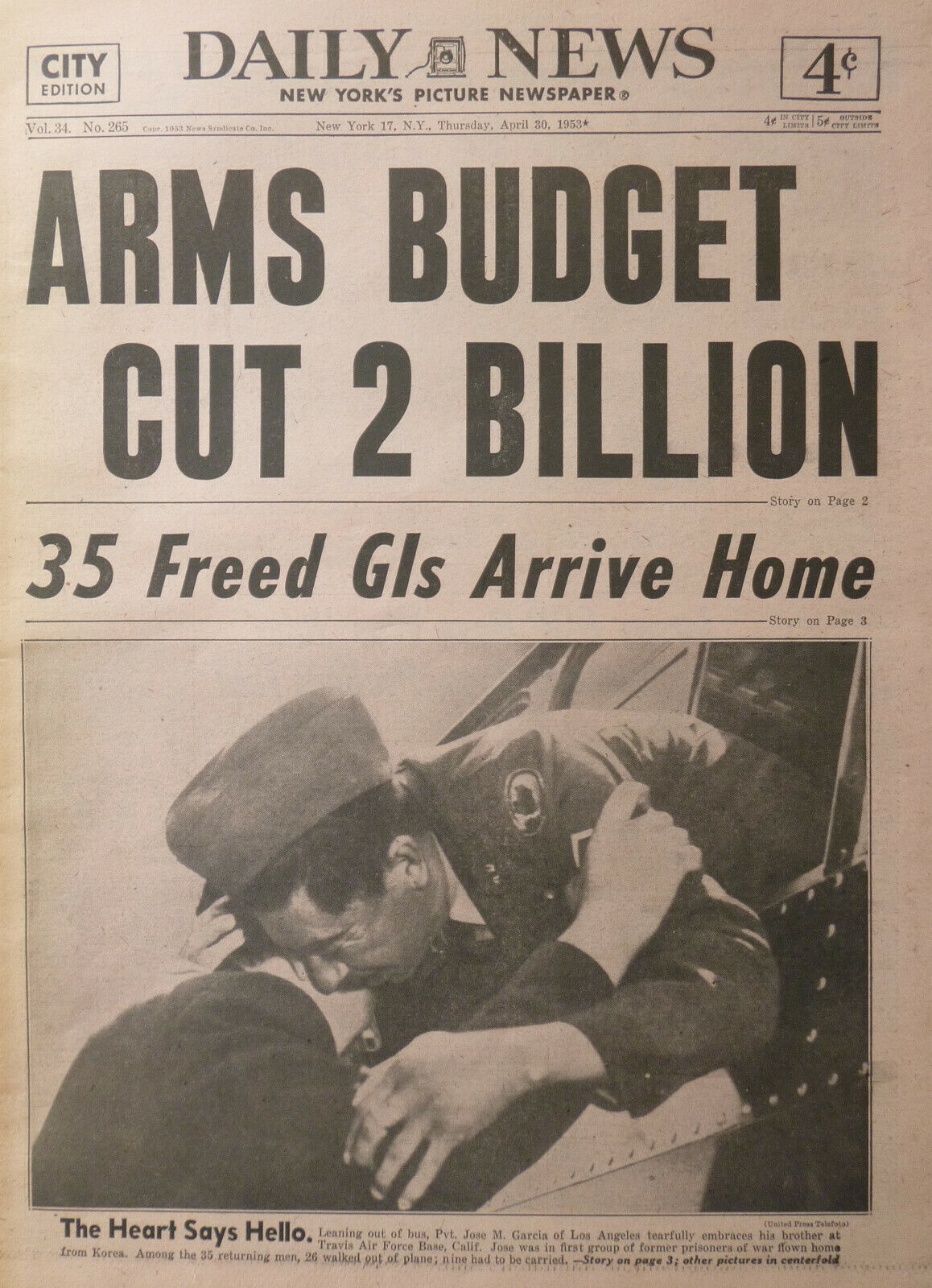-40%
ADVANCE INTO BURMA BRITISH TROOPS 1942 Japs Retreat 110105CQ B9
$ 21.11
- Description
- Size Guide
Description
Original Toronto Daily Star Dated December 19th 1942 (36 Pages)Japs Abondon Burma Defences
Theatre:
South East Asia
Dates:
December 1941 to May 1945
Location:
Burma (now also known as Myanmar)
Outcome:
Early Japanese victories, eventually reversed by a combination of British and Chinese forces.
Influences:
Most operations had to be confined to the 'dry seasons' between November and May.
Players:
Allies: 14th Army under General William Slim, which included 4th Corps under General Geoffrey Scoones and 15th Corps under General Philip Christison; 17th Indian Division under Major-General JG Smyth; 7th Armoured Brigade; 3rd Indian Division (Chindits), including British 70th Division
Japan: 15th Army under Lt-General S Iida and later under Lieutenant General Renya Mutagachi; 28th Army under General Sakurai (three divisions); 33rd Army under General Honda (two divisions)
Following their attack on Pearl Harbor on 7 December 1941, the Japanese proceeded to attack American, British and Dutch territories in and around the Pacific before moving west to Burma from Thailand.
The invasion of Burma started in mid-December 1941 with the capital, Rangoon, the main target. The city fell on 8 March 1942 and over the next two months the British forces were driven out of the rest of Burma and into India.
British plans to counter-attack from India in the dry season starting in November 1942 proved impractical and the one attempt - the Arakan Offensive - was a disaster. The British had major logistic and political difficulties in India and many divisions of the Indian Command lacked experience, training and equipment.
The reoccupation of northern Burma was an important priority because the area contained the Burma Road. Following the Japanese capture of most of China's coastline, the Burma Road was almost the only route for supplies to Chiang Kai-Shek's Nationalist Chinese Army, which was fighting the Japanese on mainland China. Its closure was one of Japan's main reasons for invading Burma.
Allied plans in October 1942 for a joint attack with the Chinese armies located in the Indian province of Assam and the Chinese province of Yunnan were abandoned, but General Wavell nevertheless decided on a limited offensive to recapture Burma's Arakan coastal region. It failed dismally. The only ray of light came from the Chindits, the Long Range Penetration groups that used guerrilla tactics in the Burmese jungle.
Over the course of 1943, Allied military strength was considerably increased and the implications of this build-up prompted the Japanese to launch an offensive against Imphal and Kohima in Northern India. This interrupted another British attack on Arakan in early 1944, but was eventually abandoned by the Japanese because of food and ammunition shortages.
In the meantime, a new Chindit offensive was launched in March 1944 to capture Indaw and the surrounding territory, around the River Irrawaddy. However, the operation was repulsed by the Japanese and the Chindits were moved north to help the Chinese, commanded by US General Stilwell.
By the time the monsoon arrived in 1944, the Allies were in a good position to recapture Burma. The Japanese forces were exhausted and depleted - they sustained heavy losses during the intensive combat at Imphal and Kohima, and lost troops and equipment that were transferred elsewhere in the Pacific to fight the resurgent Allies.
The Allies considered two plans. Operation Capital was a thrust overland to retake north-central Burma, while Operation Dracula was an amphibious attack on the south.
Both Slim and his colleagues in SEAC (South East Asia Command) favoured an overland approach and, after a large-scale reorganisation of logistics, Operation Capital began in mid-October 1944.
The 33rd Corps pushed forward to establish a bridgehead across the Chindwin by mid-December and, reinforced by the 4th Corps, moved south east towards Mandalay.
The Japanese were being squeezed by US forces in the Pacific and could not spare any more troops, but General Kimura (Commander-in-Chief of the Burma Area Army) was ordered to hold his ground to prevent the Allies from opening up the Burma Road or moving onto Malaya. The Allies had more troops, armour and aircraft and began capturing subsidiary targets to use as air bases for the major push in 1945.










